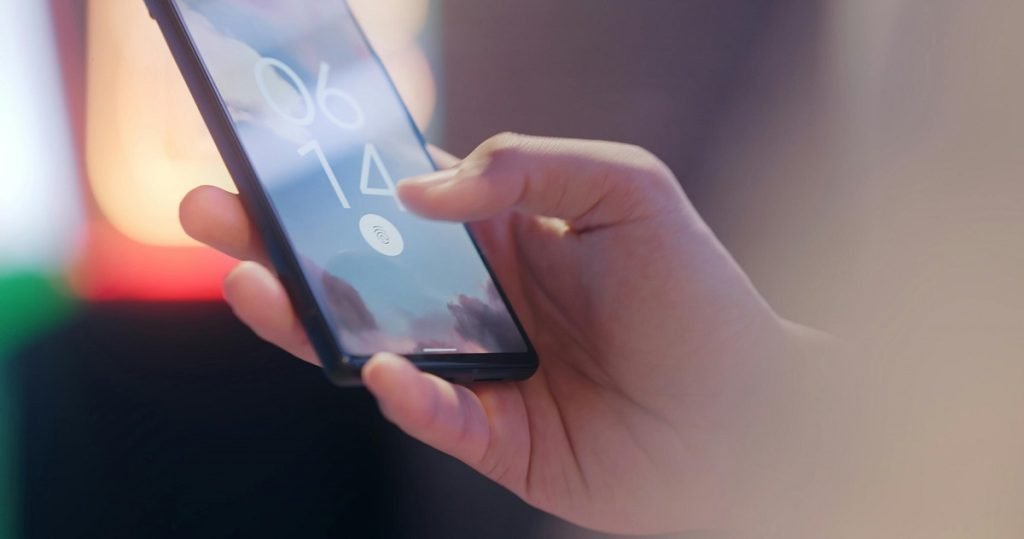Biometric authentication—facial recognition and fingerprint scanning—is one of the most popular security features on modern devices.
Privacy Concerns: It’s Time to Reconsider Face or Fingerprint Unlocking. Smartphones have become essential tools in the current digital era, carrying a wealth of personal data that ranges from location records and priceless images to financial information and private messaging. Therefore, it’s essential to put strong security measures in place to protect our digital life from snoopers and bad actors. Biometric authentication—facial recognition and fingerprint scanning—is one of the most popular security features on modern devices. These techniques can seem practical, but they come with serious privacy hazards that are frequently overlooked.
The Deceptive Feeling of Safety: Drawbacks of Biometric Verification
With the promotion of facial recognition and fingerprint scanning as safe and convenient substitutes for conventional password-based authentication, these technologies have gained widespread use. These biometric identifiers, however, are susceptible to sophisticated attacks since they are simple to copy and collect.
Face Recognition: A Fallacious Security Illusion
Although facial recognition technology has come a long way, it is still far from perfect. Studies have shown that well-taken pictures or even masks that are 3D printed can fool facial recognition software into allowing unwanted access. Moreover, it has been reported that governments and law enforcement organizations have used facial recognition data for mass monitoring, which raises serious concerns about civil liberties.
Scanning Fingerprints: Leaving Traceable Evidence All Around
Despite having some drawbacks, fingerprint scanning is not inherently more secure than facial recognition. Your fingerprints leave a trail that can be lifted and duplicated with easily obtained materials every time you contact a surface. Furthermore, unlike a password, once your fingerprint data is compromised, it’s almost impossible to update or remove it.
The Danger of Force and Involuntary Opening
Privacy Concerns: It’s Time to Reconsider Face or Fingerprint Unlocking. Beyond the technical flaws, the possibility of coercion and forced unlocking is another worrying aspect of biometric authentication. In contrast to passcodes or passwords, which are easily forgotten or withheld, your biometric information is inextricably connected to your physical identity. You might be forced to unlock your smartphone against your will by law enforcement officials or other nefarious actors, jeopardizing your privacy and disclosing private information.
Accepting Privacy-Centric Options
The privacy hazards involved with biometric authentication are too great to overlook, despite the technology’s seeming convenience. Thankfully, there are substitute security solutions that can offer a more favorable equilibrium between ease of use and privacy preservation.
Robust Alphabetic Passwords
Using a strong alphanumeric passcode is one of the easiest and most efficient ways to secure your smartphone. A complicated passcode made up of letters, numbers, and symbols is significantly more resistant to brute-force attacks and unauthorized access attempts, even though it might seem less convenient than biometric authentication.
Dual-Factor Verification (2FA)
You may greatly improve the security of your device and personal information by adding an additional layer of protection, such two-factor authentication (2FA). By combining a physical token or an app-generated code with a password or passcode, 2FA makes it far more difficult for hackers to obtain illegal access.
Apps for Authentication with a Privacy Lens
Numerous apps that prioritize privacy in authentication have surfaced, providing a more versatile and safe method of unlocking devices. These applications use encryption techniques or one-time passcode generators to secure your data even in the unlikely event that your device is compromised.
Twist-based biometric authentication
Consider combining biometric authentication with other security measures if you still find it more convenient. For example, you may use biometrics as a backup authentication mechanism for some apps or services, and set up a strong alphanumeric passcode as your primary lock screen.
Finding the Correct Balance
It’s critical to recognize that there is always a trade-off between privacy and convenience, and that no security mechanism is 100% reliable. However, you may take proactive measures to protect your digital privacy and personal information by being aware of the hazards connected with biometric authentication and looking into alternative options.
Keep in mind that your gadget is your entryway to the digital world, therefore you should handle it with extreme prudence. Through the adoption of security-conscious behavior and privacy-centric authentication techniques, you can get the rewards of contemporary technology while reducing the threats to your personal data.
In the linked world of today, privacy is a valuable resource that necessitates our alertness and proactive actions. Thus, pause to consider your device’s security settings again and consciously decide to give your digital privacy top priority. You’ll be grateful to yourself in the future.
The Situation of Biometric Data in Law
Privacy Concerns: It’s Time to Reconsider Face or Fingerprint Unlocking. Biometric data collection and use, including fingerprinting and facial recognition, has brought up a number of important legal and ethical issues in recent years. A number of legal authorities have enacted legislation and guidelines to control the processing of biometric data, acknowledging the possible threats to privacy and the necessity of safeguarding people’s rights.
For instance, a number of states in the US, including Texas, Illinois, and Washington, have passed biometric privacy laws that place stringent restrictions on businesses that gather and utilize biometric data. Usually, these regulations require data protection procedures, limitations on the commercial use of biometric data, and informed consent.
Furthermore, biometric data processing is subject to strict guidelines set by the General Data Protection Regulation (GDPR) of the European Union. Biometric data is considered a unique type of personal data that necessitates enhanced protection and specific agreement from individuals.
It’s important to be aware of the laws in your area pertaining to biometric data and to use caution when disclosing or exposing your biometric data to outside parties.
New Technologies Will Shape Authentication in the Future
Although the limitations of biometric authentication are the subject of the current debate, new authentication techniques are soon to be developed as a result of the ongoing evolution of technology. Emerging technologies that have the potential to change secure authentication in the future include:
Biometrics Behavioral
In order to confirm a person’s identification, this method examines their distinctive behavioral patterns, such as their typing rhythm, mouse movements, or gait patterns. Behavioral biometrics are dynamic and continually monitorable, which makes it more difficult for unauthorized users to duplicate them than standard biometrics.
Authentication in many modes
Contextual information (such location or device recognition), passwords, and biometrics are a few examples of authentication factors that can be used to greatly increase security while preserving convenience. Attackers will find it more difficult to get around all security measures at once with this layered approach.
Cryptography Resistant to Quantum
Traditional encryption techniques could be vulnerable to attacks from potent quantum computers as quantum computing technology develops. To ensure the long-term security of authentication systems, researchers are working on creating cryptographic algorithms that are resistant to quantum computing capability.
Dispersed Identity Administration
More control over personal data, including biometric data, may be granted to individuals using blockchain technology and decentralized identity management systems. Because these systems do not require centralized databases, there is a lower chance of significant data breaches and secure, self-sovereign identity management is made possible.
Even if these new technologies have a lot of potential, it’s important to proceed cautiously and give privacy and security first priority right away.
In Summary
The search for practical and safe authentication techniques is a never-ending task in the ever changing digital world. Although biometric authentication appears to be an easy-to-use option, there are valid privacy issues due to its inherent hazards and vulnerabilities.
People can better combine convenience and privacy protection by investigating alternate login techniques including two-factor authentication, strong alphanumeric passcodes, and privacy-focused apps. You can further future-proof your digital security by keeping up with the regulatory landscape surrounding biometric data and keeping a watch on new authentication methods. In the end, your threat model, risk tolerance, and privacy priorities will determine whether you accept or reject biometric authentication. You can, however, take charge of your digital identity and protect your personal information from snoopers and bad actors by being aware of the potential hazards and actively looking for privacy-centric.




